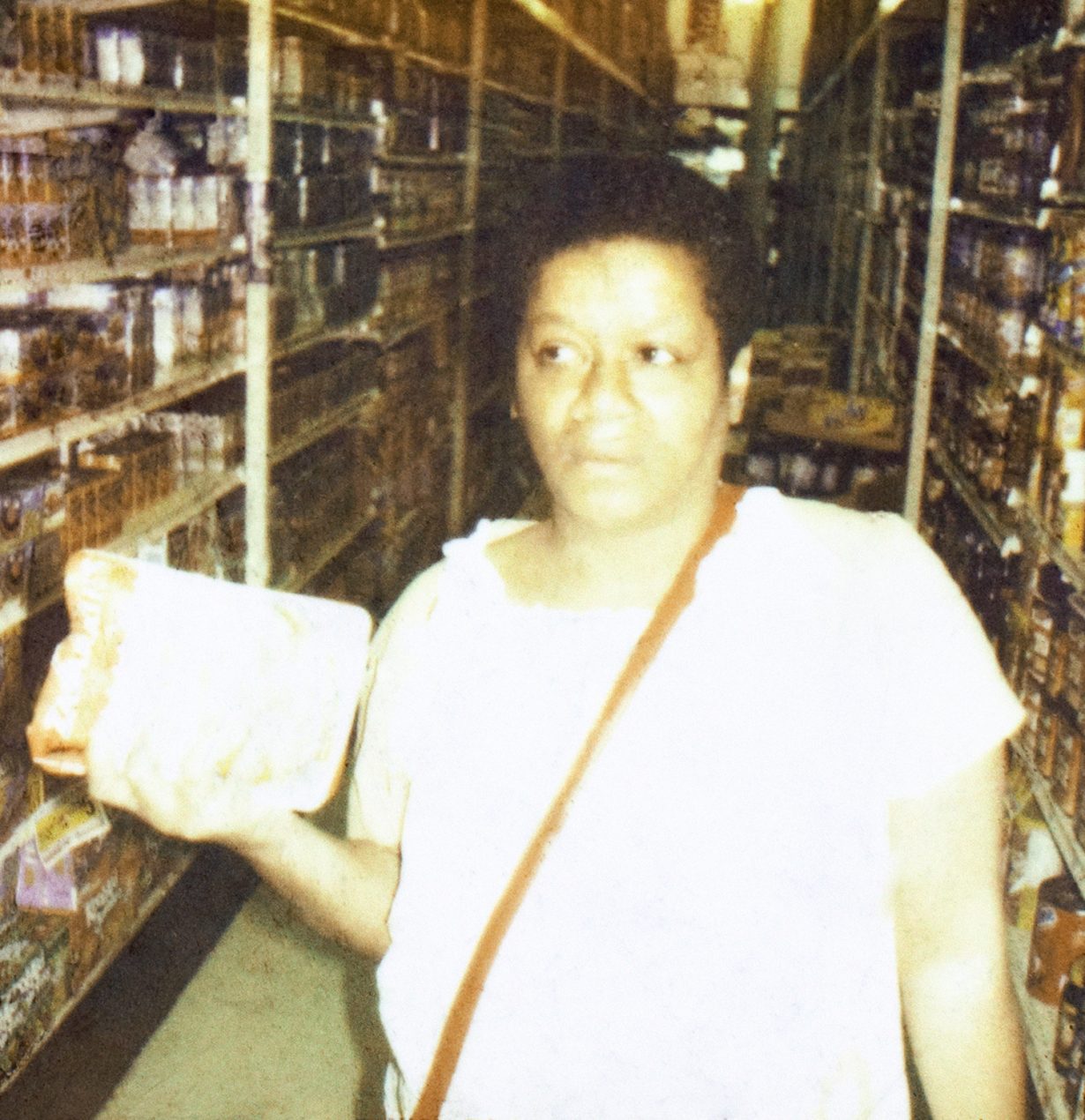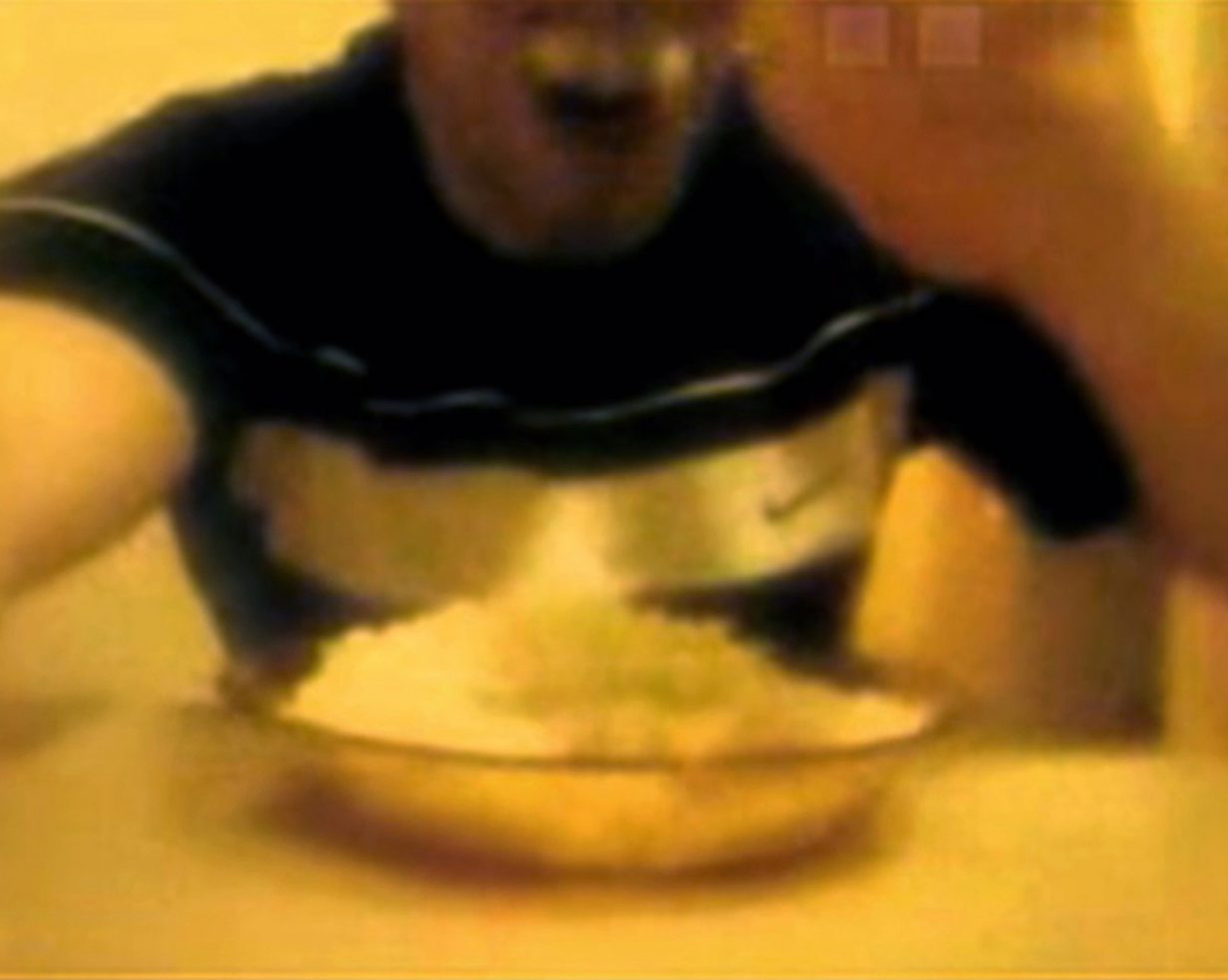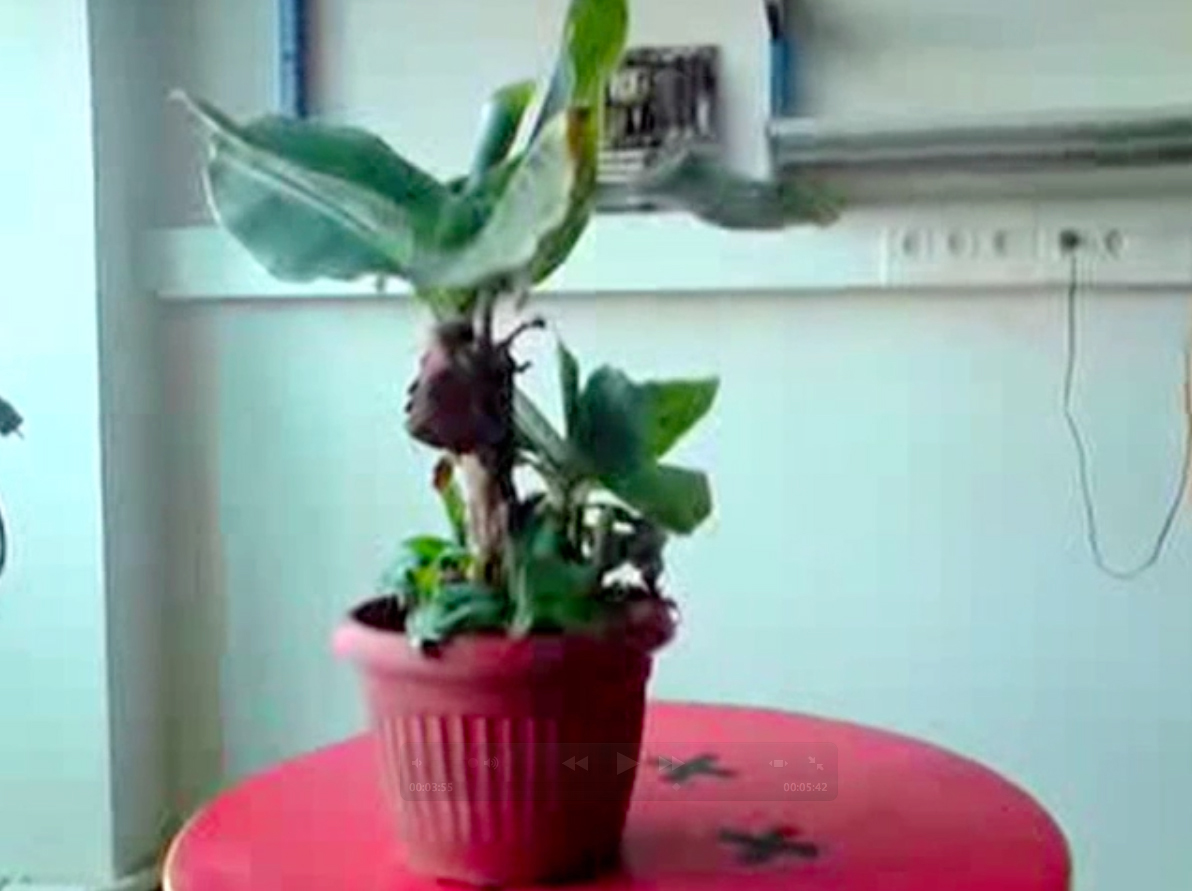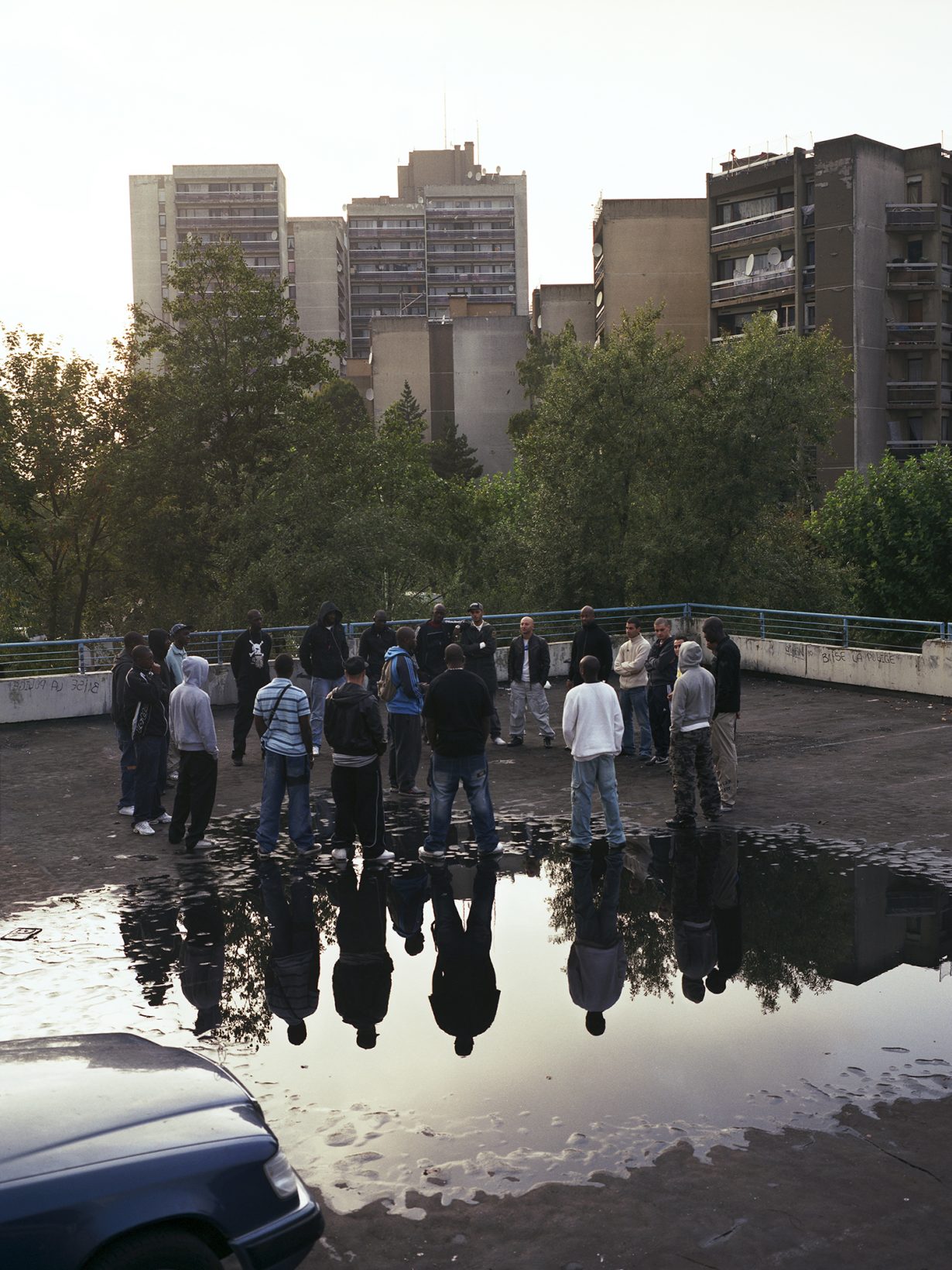The French-Algerian artist’s work challenges conventional notions of what is deemed of sufficient ‘importance’ to be the subject of art
A late-middle-aged man reads to camera from a sheet of paper. It’s not easy. He stutters and hesitates as he processes words into sounds. It’s as awkward to watch. The process doesn’t feel traumatic; just difficult. But, however haltingly, he ploughs on. It becomes clear that the text is a French legal document outlining a court judgment and the resulting prison sentence. Enumerating the various articles and decrees that have led to the verdict. Our reader seems determined to complete his recitation. Even as his hesitations and stops seem slowly to be draining the words and sentences of their meaning. Both for him and for us. In any case, any true understanding of them would require access to a (seemingly endless) list of the Republic’s laws.
He’s standing in a small room: perhaps a hotel, perhaps another type of
institution. There’s what looks like a fire-escape notice on the back of the door to one side, a wall-mounted TV on the other. Around halfway through the four-and-a-half-minute clip, he’s interrupted by a younger woman who enters through the door, announcing herself playfully, in Arabic, as ‘the doctor’ bringing his ‘medicine’. A tin of chewing tobacco is handed over. She leaves. Our reader appears mildly annoyed at the interruption to his monologue. For him, it seems, there has been an invasion of his stage. Such as it is. In any case, he is conscious of the fact that he’s performing, a reminder that all the world’s a stage now that the seemingly unconscious, casual footage of the smartphone variety (of which this seems to be an example) has merged with the more traditional experience of everyday life. After a cut in the footage our performer carries on, stuttering still, but reading out the name of the victim and the crime. Violent robbery. His victim, his crime.

Despite its ordinary aesthetic, this is an artwork, a video by French-Algerian artist Mohamed Bourouissa, that was shot in 2015 and titled Nasser after its star, the artist’s uncle. Like much of the artist’s work, which spans a range of media, it documents an individual confronting a system: a code (which, in parts during the reading, seems closer to algebra than the system of rules that structure a society) and a person (for whom French is evidently a second language) who stands both inside and outside of it. And yet in the middle of it all is a crime and a victim, leading the viewer to an uncomfortable position with respect to where their sympathies lie. With the seemingly fragile man who is attempting to communicate something to us (as much as to himself) in a language he may or may not understand, or with the victim under law? This is what it means to exist on the margins. To find ourselves rendered incapable of locating a truth even when it is apparently placed in front of us.
A confrontation between the codes of art and the codes of everyday life is present too in the artist’s early photographic series Périphérique (2005–08), which blends the aesthetics of contemporary reportage and street photography with the grand posturing drawn from the codes of traditional history painting (think of the painters who imagined and immortalised the founding of the Republic, such as Jacques-Louis David or Eugène Delacroix). Shot in Paris’s banlieues (suburbs), the images depict people who might plausibly be their residents – which, in the main, means immigrants and people with ethnic minority backgrounds – captured in poses that suggest conflict, illicit activities and social tension. A reading further encouraged by the fact that the series began contemporaneously with the 2005 riots that took place in the suburbs of a number of France’s major cities. And yet, for the most part, this kind of dramatic reading is caused by historically rooted cultural conventions concerning race, identity and body language rather than any discernible acts of actual aggression or criminality in the images themselves. Moreover, the scenes are as staged as the ‘history’ paintings they reference; the actors made up of Bourouissa’s friends and acquaintances from the banlieues. A culture in which he grew up. How we interpret them is not so much a product of the images themselves as it is of the prejudices and preconceptions we bring to them.

“For me there is a poetry inside the streets,” the artist explains as we talk over Zoom. “I try to reuse this whole culture and try to explore or to expose this idea that there is a distinction between ‘high culture’ and ‘local culture’. For me, this does not exist. In Périphérique, I was trying to integrate and reuse the code [of art history] with the cultural aspect I have. It’s more interesting to think about poetry and not think about high culture and low culture.”
Instead, many of Bourouissa’s works concern those who want to integrate within a society but are kept out, whether by the codes of art or the codes that govern societal and cultural prejudice. Inasmuch as there is any distinction. Or, more simply, they maintain that integration, as opposed to assimilation, is by nature a two-way street, even if that is not how society or the politicians and media groups who shape the issue tend to present it.


Bourouissa himself was born in Algeria (in Blida, around 50km from the capital, Algiers) and moved to France with his family at the age of five. He spoke Arabic at home, with his mother, who didn’t speak French very well and didn’t read it at all. “For me, the integration with the language was so hard,” he recalls. “I grew up with this idea of the importance of language, to have more language, but in the country of colonisation it was not good to speak Arabic, for example. All this time, the society has this aspect of racism inside it: it pushes you to think that if you speak two languages, you are not integrated. But that depends on what language it is. They don’t say to someone who speaks German or English that it’s the worst to speak German, or speak English. They say, ‘Oh, he speaks English and he speaks French – that’s great.’ The reason we don’t say someone who speaks Arabic and French is good is because of the baggage of history. But I don’t have to accept that. I do have to end this. To transform this point of view.”
In Hara (2020), a work created for last year’s Manifesta in Marseilles, the artist transforms the cries used as an alert by lookouts at the city’s drug-dealing corners into an abstracted form of urban birdsong. Although the artist admits that, in part, the work stems from his interest in concrete poetry, he is at pains to point out that it is not about elevating something found in the everyday of the streets to the status of art. “There is the relation [to concrete poetry], but I’m not thinking about it. I just try to create a moment of poetry, try to understand this world and to push it into another form of feeling, a signal of this situation we are living right now.” And while cries of ‘hara’ are in some ways the vital breath of the street, to make things a little more interesting they also resonate with the Arabic word for bullshit.

As much as Bourouissa’s art is about shifting attention from the centre to the periphery (a kind of reverse colonisation), it is also a challenge to conventional notions of what is deemed of sufficient ‘importance’ to be the subject of art. That they aren’t the product of tradition or convention (although these languages are evidently there to be exploited), but rather a matter of context and perspective. Contingent, rather than necessary truths; the particular rather than the universal. No more so than in Temps Mort (Dead Time, 2008–09), a series of SMS exchanges and videos made in collaboration with Al, a friend of Bourouissa’s who was in jail at the time, which juxtaposes scenes of Al’s cell with scenes of Bourouissa’s freedom (a train shot through the bars of prison window and a train being ridden; the routine of prison life and the artist’s trip to Helsinki). Interspersed, in the early moments of the exchange, with text-messaged directorial instructions from the artist to his collaborator concerning what and how to shoot, which over the course of the resulting video slowly morph into a more freeflowing exchange. As much as the work is about the connections and disconnections between freedom and a lack of it, in another way the film is about compression and expansion: the compression of life into a cell versus the expansive life of a free man; the compression of language into the form of a text message and of images so that they can be exchanged, and their expansion in the form of an artwork.
In the years since Périphérique, the artist’s own relationship to his subjects, collaborators or communities – a power dynamic of sorts – has increasingly become a part of the content of his work. In a video-work documenting the creation of the artist’s Resilience Garden, a collaboration with local residents of the Toxteth district of Liverpool for the 2018 edition of the city’s biennial, the artist explores the generation of the idea, inspired by an encounter with Bourlem Mohamed, a patient of the psychoanalyst and political theorist Frantz Fanon at the psychiatric hospital of Blida-Joinville in Bourouissa’s birthtown, who had created a garden as part of his occupational therapy, before going on to document the process of its making in Liverpool. Instead of the traditional celebratory discourse that surrounds community art projects, the only local voice we hear talking to the artist is that of a person being rudely critical of the whole endeavour. For Bourouissa such inclusions are a crucial part of recognising his own position as an artist: “I said to myself, ‘ok, I come here, I make a garden, I want to create this community’, but you also create this form of colonisation for sure, even as you try to involve the people and to present your point of view.” It’s about his discomforts too, his own sense of friction.

Many of the primary themes of Bourouissa’s work come together in the two-channel video Horse Day (2014–15), which documents his encounter with the urban stables of the Strawberry Mansion neighbourhood in Philadelphia (the artist was inspired by Martha Camarillo’s photographs documenting the communities whose make-shift stables line Fletcher Street in what otherwise appears to be an urban ghetto). Bourouissa lived within the community (which is run by and constituted of African Americans) for eight months, eventually producing the video, which mixes the language of documentary, cinema and a community event (the artist eventually persuaded the community to stage a competition, Horse Day, with artists creating costumes for the horses, the buildup to and staging of which forms the primary focus of the work). If Périphérique takes on the imagery that represents the mythology surrounding the foundation of the Republic, Horse Day tackles the Western imagery that represents the mythology surrounding the foundation of the United States. “Who John Wayne?” begins one of the conversations between the horseriders early in the video. “Was he white or was he Black?” “Gotta be Black,” one of the riders shoots back. “I never dress like a cowboy; I’m a horseman,” says another. In one of the more comic moments a rider talks to one of the costume makers about being uncomfortable about decorating his white horse like a skeleton by painting large sections of its coat black. People like the horse because it is beautiful and white, he protests. And as a viewer, you’re never quite sure if the discussion is circling around race, representation, or more simply a rider’s love for his horse, a stripping away of all the contexts that make a Black, urban cowboy exotic. Leaving just a strange Romantic poetry behind.
“I think now we can get this power,” the artist continues. “We are here right now. You have to deal with that and you have to accept that. I’m not going to accept your eyes on me. You have these eyes on me but I know I’m here. I am legitimate because I know what I give and what I think. I push something more in the cultural aspect in France. I hope so. That’s what I feel.” It’s a vision in which art is not simply deployed to highlight what is broken, but one in which art can offer fixes as well.
Mohamed Bourouissa: HARa!!!!!!hAaaRAAAAA!!!!!hHAaA!!! is on show at CCA Goldsmiths, London, from 21 May to 1 August 2021
